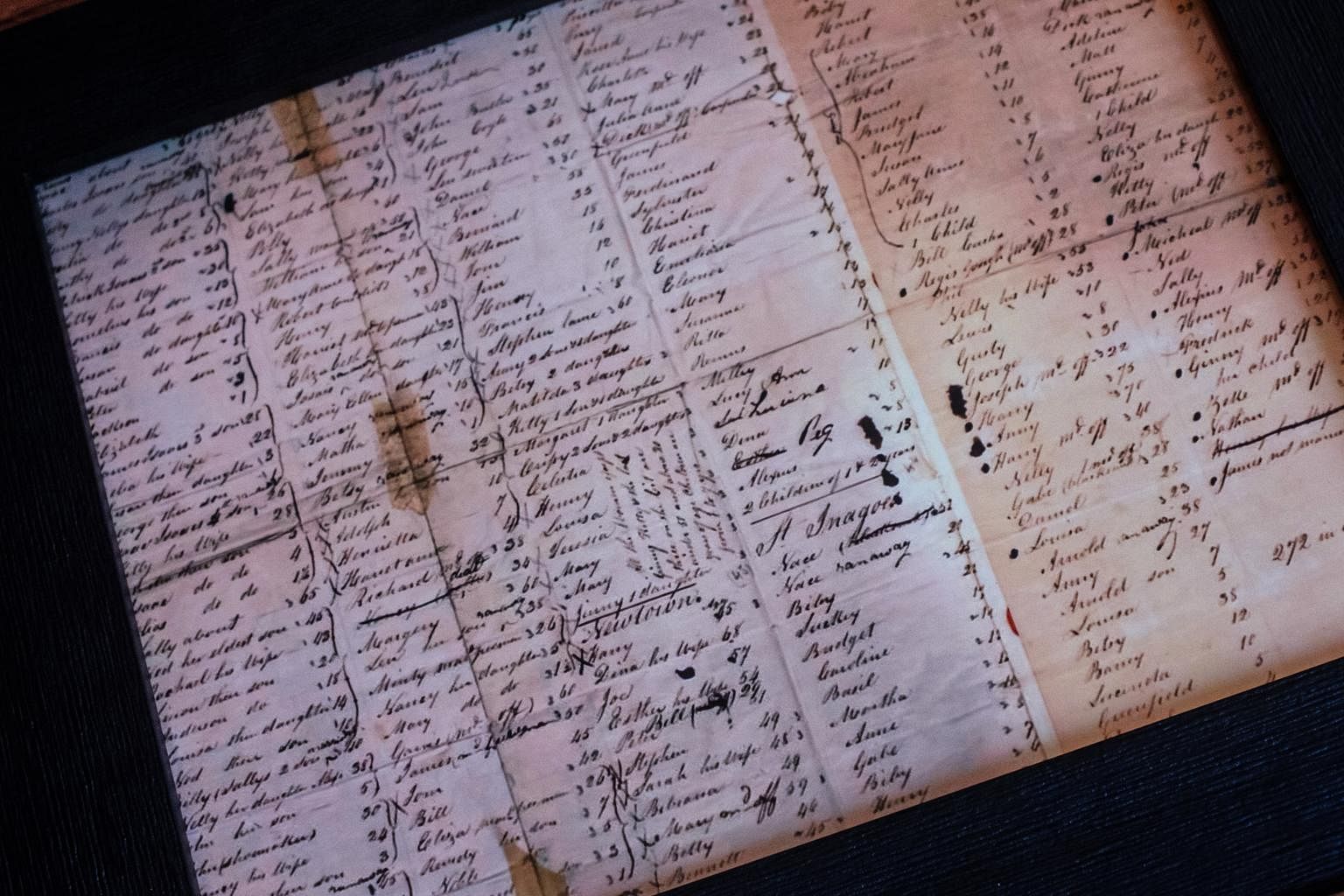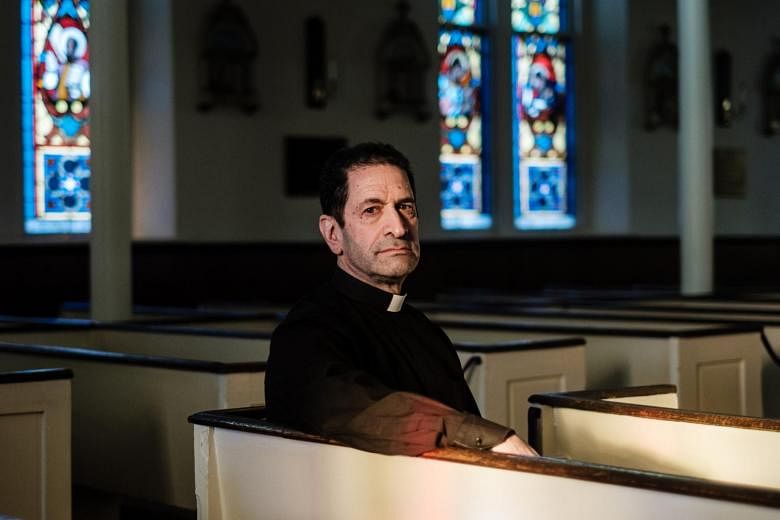NEW YORK (NYTIMES) - In one of the largest efforts by an institution to atone for slavery, a prominent order of Catholic priests has vowed to raise US$100 million (S$134 million) to benefit the descendants of the enslaved people it once owned and to promote racial reconciliation initiatives across the United States.
The move by the leaders of the Jesuit conference of priests represents the largest effort by the Roman Catholic Church to make amends for the buying, selling and enslavement of Black people, church officials and historians said.
The pledge comes at a time when calls for reparations are ringing through Congress, college campuses, church basements and town halls, as leaders grapple with the painful legacies of segregation and the nation's system of involuntary servitude.
"This is an opportunity for Jesuits to begin a very serious process of truth and reconciliation," said the Reverend Timothy P. Kesicki, president of the Jesuit Conference of Canada and the United States. "Our shameful history of Jesuit slave-holding in the United States has been taken off the dusty shelf, and it can never be put back."
The money raised by the Jesuits will flow into a new foundation established in partnership with a group of descendants, who pressed for negotiations with the Jesuits after learning from a series of articles in The New York Times that their ancestors had been sold in 1838.
The order relied on slave labour and slave sales for more than a century to sustain the clergy and to help finance the construction and the day-to-day operations of churches and schools, including the nation's first Catholic institution of higher learning, the college now known as Georgetown University.
Kesicki said his order had already deposited US$15 million into a trust established to support the foundation, whose governing board will include representatives from other institutions with roots in slavery. The Jesuits have also hired a national fundraising firm with a goal of raising the rest within the next three to five years, he said.
The pledge falls short of the US$1 billion that descendant leaders had called on the Jesuits to raise. Kesicki and Joseph M. Stewart, the acting president of the newly created foundation, the Descendants Truth & Reconciliation Foundation, said that remained a long-term goal as the organisation moves to support institutions and initiatives focused on racial healing.
"We now have a pathway forward that has not been travelled before," said Stewart, a retired corporate executive whose ancestors were sold in 1838 to help save Georgetown from financial ruin.
"They did not come running to us, but because we went to them with open arms and open hearts, they responded," Stewart said of the Jesuits. "They have embraced our vision."
Roughly half of the foundation's annual budget will be distributed as grants to organisations engaging in racial reconciliation projects, Jesuit and descendant leaders said. About a quarter of the budget will support educational opportunities for descendants in the form of scholarships and grants. A smaller portion will address the emergency needs of descendants who are old or infirm.
Bishop Shelton J. Fabre, the chairman of the US Conference of Catholic Bishops' Ad Hoc Committee Against Racism, described the plan as the church's "largest financial commitment" to "heal the wounds" caused by its participation in slavery.
About 5,000 living descendants of the people enslaved by the Jesuits have been identified by genealogists at the Georgetown Memory Project, a nonprofit group.

Craig Steven Wilder, a historian at the Massachusetts Institute of Technology who has written about universities, the Catholic Church and slave-holding, described the move as an important initial step. "It will put tremendous pressure on other institutions in the United States - universities and churches - that share this history," Wilder said.
Faith institutions have been at the forefront of the growing reparations movement. In 2018, the Catholic sisters of the Religious of the Sacred Heart created a reparations fund to finance scholarships for African Americans in Grand Coteau, Louisiana, where the nuns had owned about 150 Black people.
The following year, Virginia Theological Seminary, which relied on enslaved labourers, created a US$1.7 million reparations fund, and Princeton Theological Seminary announced it would spend US$27 million on scholarships and other initiatives to make amends for its ties to slavery.
Several Episcopal dioceses with ties to slavery - including ones in Maryland, New York and Texas - have also created reparations funds.
Georgetown, which was founded by the Jesuits, has promised to raise about US$400,000 a year to benefit the descendants of people enslaved by the order. The university, which holds a seat on the board of the newly created foundation and contributed US$1 million to get it off the ground, plans to distribute the first grants this year.
This is not the first time the Jesuits have reckoned with their history. In the 1960s, the Maryland Jesuits established the Carroll Fund for Black students in need with the proceeds from the sale of property that had been part of one of their plantations.
The fund provided between US$15 million and US$25 million in scholarships to Black students at Jesuit schools, Jesuit officials said. But money from the fund also went to unrelated purposes.
Some descendants fear that the new plan - which was hammered out over three years during a series of private meetings that included representatives from the Jesuits, Georgetown and three descendant leaders, Stewart, Cheryllyn Branche and Earl Williams Sr - will also fall short, noting that the foundation was developed without input from the wider descendant community.
Sandra Green Thomas, the founding president of the GU272 Descendants Association, called the US$100 million pledge from the Jesuits "more than I ever thought we would see."
"But my concern is whether or not this foundation is going to benefit descendants or those who are in control of the foundation," she said, expressing concern over administrative costs, such as salaries and fundraising.
"If the money is not earmarked for the descendants, then it really isn't reparative. We need more details." Richard J. Cellini, the founder of the Georgetown Memory Project, worried that descendant leaders had agreed to a deal prematurely, without "a full accounting from the Maryland Jesuits of the proceeds generated by nearly 150 years of Jesuit slave-holding."
"We need to be looking at balance sheets, current and historical," Cellini said. "Until we know the size of the wealth taken from these families, we can't judge the appropriateness of the remedy presented to them."
Enslaved people have been largely left out of the origin story traditionally told about the Catholic Church in the United States.
But in the early decades of the American republic, the church established its foothold in the South, relying on plantations and enslaved labourers for its survival and expansion, according to historians and archival documents.
The Jesuits believed that the enslaved had souls, but they also viewed Black people as assets to be bought and sold. At the time, the Catholic Church did not view slave-holding as immoral, according to the Reverend Thomas R. Murphy, a historian at Seattle University.
So priests baptised the children of the enslaved, blessed their marriages and required the people they owned to attend Mass, Jesuit records show. But the records also document whippings, harsh plantation conditions, families torn apart by slave sales, and hardships experienced by people shipped far from home as the church expanded.
Still, the decision to sell virtually all of the enslaved people owned by the Maryland Jesuits in the 1830s to raise money to save Georgetown and to support the financially strapped order left some priests deeply troubled. Life on plantations in the Deep South was notoriously brutal.
"To sell our slaves," some Jesuits argued, "was the same thing as to sell their souls." But Jesuit leaders prevailed, signing an agreement in 1838 to sell 272 men, women and children in one of the largest recorded slave sales at the time.
Their story largely faded from public memory until 2015, when Georgetown's president, John J. DeGioia, announced the creation of a working group on slavery and called for a campus-wide discussion after reopening a building named for one of the early presidents involved in the slave sale.
After student protesters demanded that the names of the presidents be removed from campus buildings, Cellini established the Georgetown Memory Project and hired a team of genealogists to identify and locate the descendants of the people who had been sold.
Stewart, a devout Catholic, was one of them. "I had to process that this was done by the Catholic Church to my ancestors," he said.
Then, Stewart said, he started focusing on the Jesuits, "looking for a way to hold them accountable." In May 2017, Stewart wrote to the Jesuit leadership in Rome on behalf of the GU272 Descendants Association, calling for formal negotiations.
A month later, the Reverend Arturo Sosa, the superior general of the order, responded, describing Jesuit slave-holding as "a sin against God and a betrayal of the human dignity of your ancestors." Sosa called for a "dialogue" process between Jesuits in the United States and descendants.
In August of that year, Kesicki flew to Michigan to meet with Stewart and his wife, Clara. He blessed their home. Then the two men sat down for a conversation that would lay the groundwork for their negotiations.

